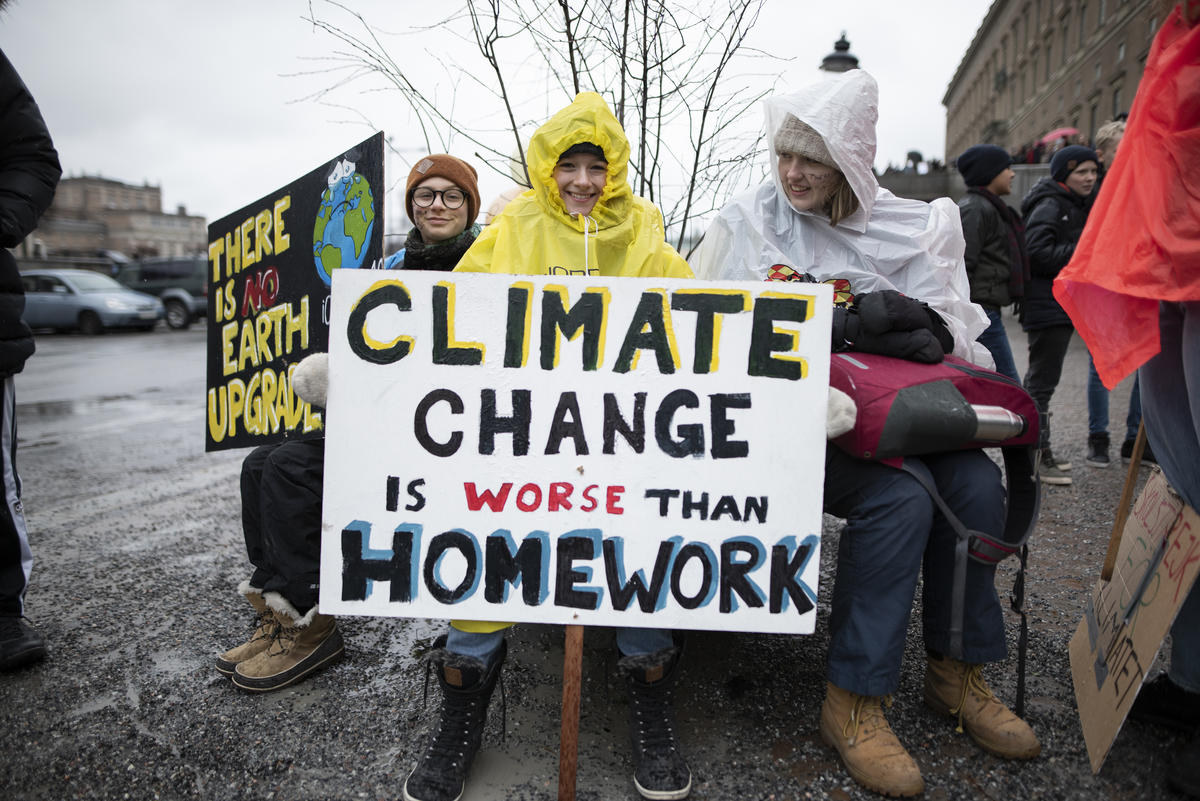Students without Schools: How Climate Change Has Affected the Education of Millions

“Just 1.5% of climate finance goes to education, according to the World Bank.”
More than 400 million students worldwide have experienced school closures from extreme weather since 2022, a World Bank report said last month.
The climate crisis is hitting education hardest in low-income countries, with an average of 18 school days lost each year, compared to 2.4 days in wealthier countries.
Not only is education under threat from climate change, but it is also largely ignored in climate finance, with previous analyses showing that less than 1.5% of climate finance goes to education.
The United Nations Children’s Fund (UNICEF) warned last year that the climate crisis was already a reality for children in East Asia and the Pacific.
Direct Threat
As climate change intensifies and the planet warms, children are the most vulnerable to its effects, with their bodies more vulnerable to high temperatures than others due to their weaker structures, which affects many aspects of their lives, including education.
Extreme heat waves have forced schools to close, especially recently, in most parts of the world for days and sometimes weeks at a time, posing a direct threat to the education of millions of children.
UNICEF data indicated that nearly a billion children, or about half of the world’s children, live in countries at high risk from the impacts of climate change.
400 million children are exposed to severe cyclones, which are becoming more frequent and dangerous as rainfall intensity increases and cyclone patterns shift.
Water scarcity also threatens some 920 million children, and this situation is likely to worsen as problems of droughts, water stress, and freshwater scarcity become more frequent.
Heatwaves also threaten some 820 million children, or more than a third of the world’s children, and this situation is getting worse as global average temperatures rise and weather patterns become more volatile.
Almost half a billion children live in areas experiencing at least twice as many extremely hot days as their grandparents, UNICEF said.
The report also found that children in 16 countries are experiencing more than one month of extremely hot days each year compared to the 1960s.
For example, the report showed that children in South Sudan are experiencing an average of 165 extremely hot days per year this decade, compared to 110 days in the 1960s, while in Paraguay the number jumped to 71 days from 36 days during the same period.
There are also eight countries, including Mali, Niger, Senegal, South Sudan and Sudan, where children spend more than half the year in temperatures above 35 degrees.
In the United States, 36 million children are exposed to heatwaves twice as much as they were 60 years ago, while 5.7 million children are exposed to four times as much.
Children in low- and middle-income countries are expected to feel the most severe effects of climate change, which are the regions least responsible for emissions of climate-changing gases, according to the UNICEF report.
It also noted that Pakistan closed half of its schools for a full week last May due to high temperatures, meaning that 26 million children were unable to continue their education for a week.
Bangladesh also closed schools for half of its students during a heatwave in April, affecting 33 million children, as did South Sudan the same month.
The Philippines also ordered schools closed for two days during that period, when temperatures reached what the country’s meteorological department described as dangerous levels.
The UNICEF report also noted that the generation gap is most pronounced in some of the world’s poorest countries.
For example, nearly 40% of children in Benin and 66% of children in Cote d’Ivoire are expected to experience twice as many hot days in their lifetime as their grandparents did. The same is true for nearly half of children in Honduras.
The gap is also felt in some rich countries, with an estimated 85% of children in France and 76% in Greece expected to experience twice as many hot days as their grandparents did in the 1960s.

Extreme Weather
There is no comprehensive global data on school closures due to extreme weather, as these decisions are often made locally and, on the fly, based on weather forecasts.
However, based on media reports, the Office of the UN Secretary-General recently estimated that at least 80 million children worldwide were out of school in 2024 due to extreme temperatures.
Even when schools are open, heatwaves make learning more difficult.
In Brazil, students in 50% of the poorest municipalities lose about half a year of learning due to extreme temperatures alone.
According to research cited by the New York Times, heatwaves affect education progress worldwide, including test scores.
“We are deeply concerned that the number of extreme heat days is going to indirectly lead to learning loss,” UNICEF official Lily Caprani warned in an interview with the newspaper.
Exposure to high temperatures can also affect brain development and hinder learning.
Heatwaves can lead to slower reaction times, difficulty focusing, and disrupted sleep patterns, affecting early childhood cognitive function and learning.
According to a new UNICEF report, high temperature is not the only factor responsible for threatening children’s education. Other climate phenomena, including floods, have also wreaked havoc on schools.
For example, deadly floods exacerbated by climate change in Brazil closed schools for weeks, affecting tens of thousands of students.
In India, schools were also closed for several days in several parts of the country in July and August.

Climate Shocks
Despite these catastrophic consequences, education remains overlooked in the climate policy agenda. Education made up less than 1.5% of climate-related official development assistance in 2020 and was mentioned in less than 1 in 3 Nationally Determined Contribution plans.
Last April, the United Nations launched a fund to support refugees and internally displaced people in the face of climate shocks to raise $100 million by the end of 2025.
The UNHCR announced in a statement that its work to strengthen resilience to climate change is part of its protection and assistance activities provided for more than 114 million people worldwide.
Scientists say the only way to address rising global temperatures is to move away from burning fossil fuels, the main driver of global warming.
In addition, schools need to learn how to deal with rising temperatures instead of closing their doors to students.
School buildings should be renovated to more effectively resist the high temperatures inside the classrooms, with better insulation, white reflective paint, green plants on the roofs, and dense trees around the school.
Installing air conditioners in classrooms may also alleviate the problem, although air conditioning is a luxury that most schools do not have.
Even in the United States, about half of school districts need to install or repair their air conditioning systems, according to the US Government Accountability Office.

Some wealthy countries in the region have taken steps to ensure that education is not affected by climate change.
In Japan, less than half of public schools were air-conditioned in 2018, but that figure has risen to more than 95% by 2022.
Sources
- The Climate Crisis is a Child Rights Crisis [Report]
- The Impact of Climate Change on Education and what to do about it
- UNHCR launches fund to shield refugees and other displaced people from climate shocks
- More than 400 Million Students Affected by Climate-Related School Closures since 2022
- Almost half a billion children live in areas experiencing at least twice as many extremely hot days as their grandparents - UNICEF
- How Extreme Heat Is Threatening Education Progress Worldwide









